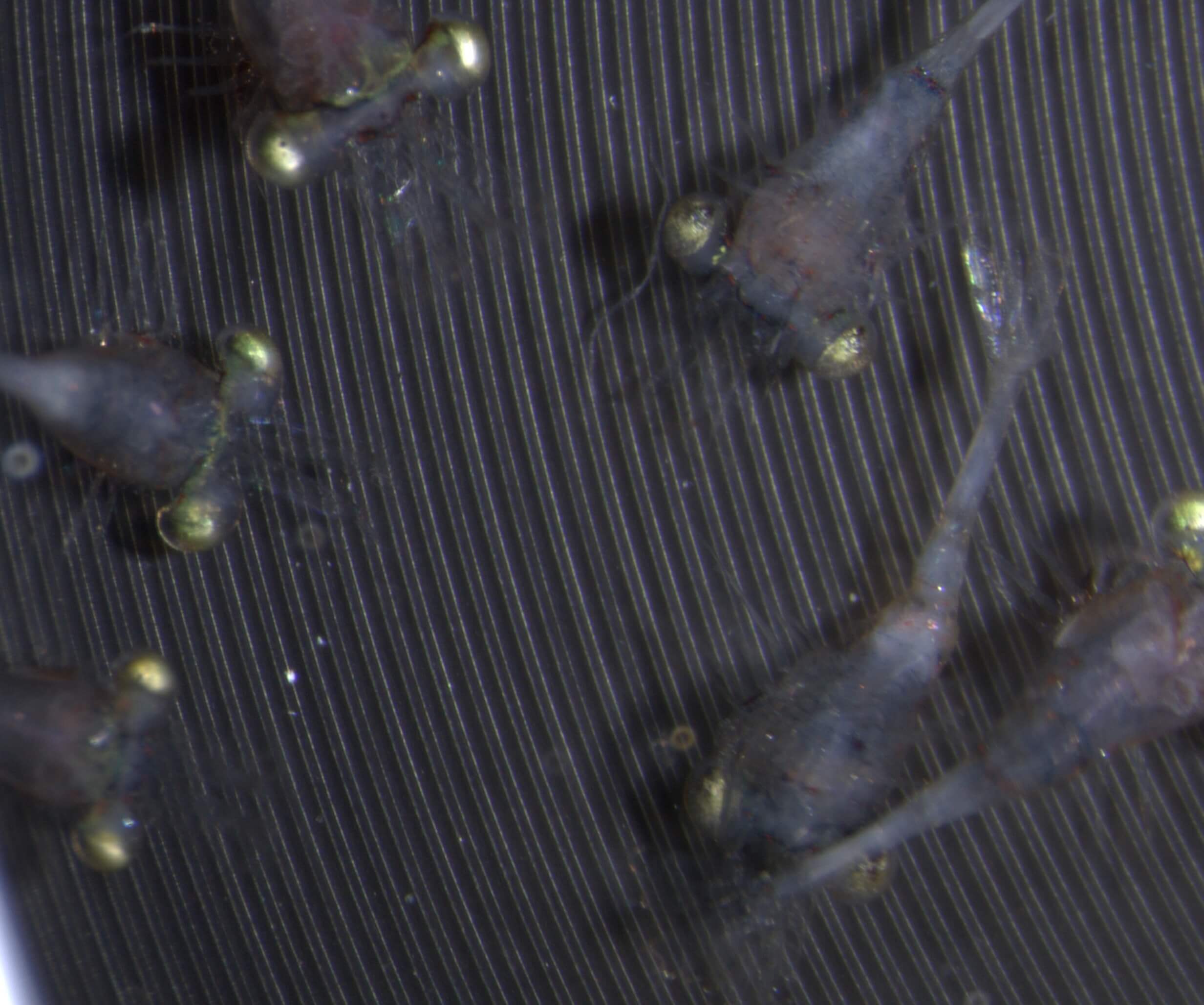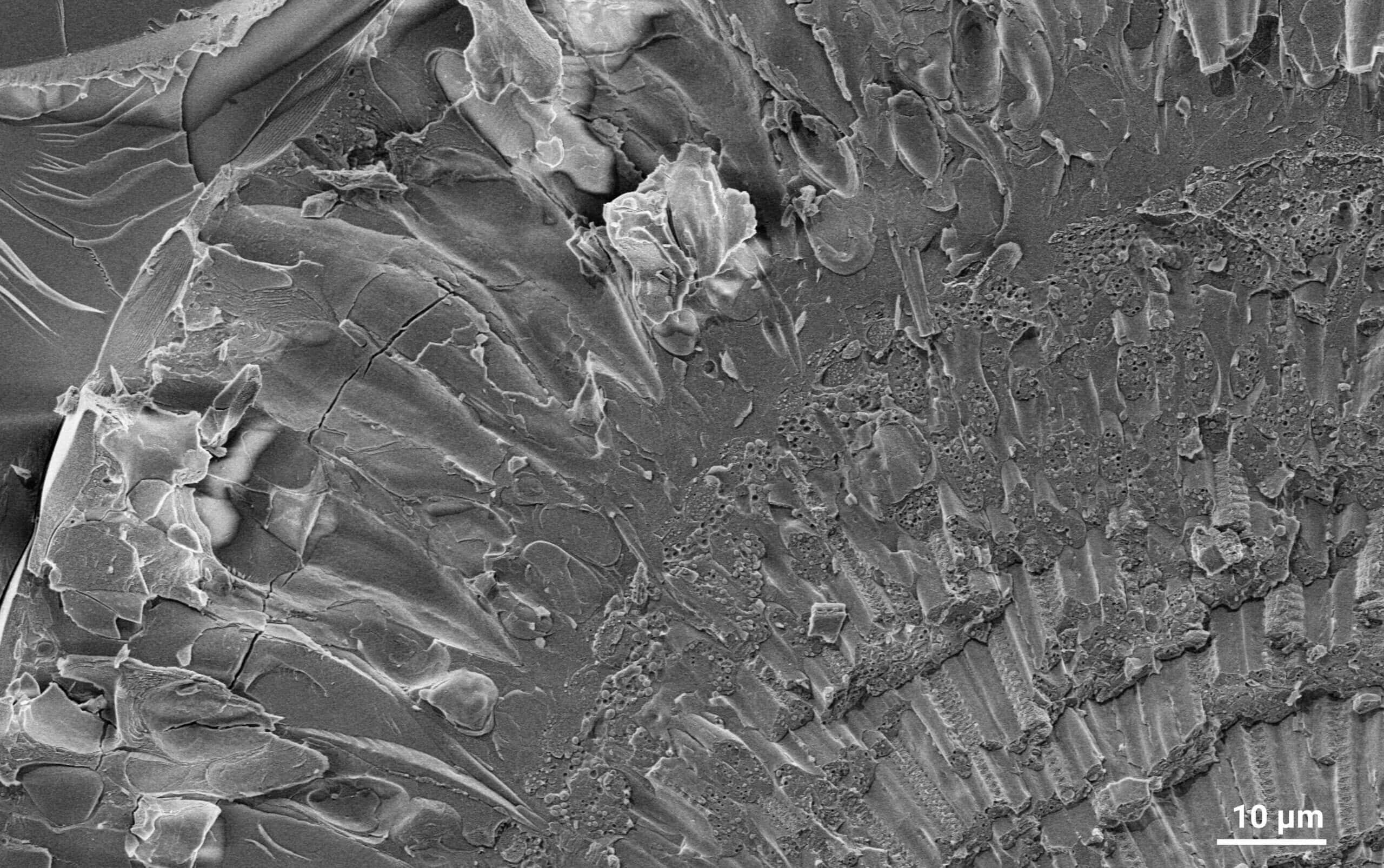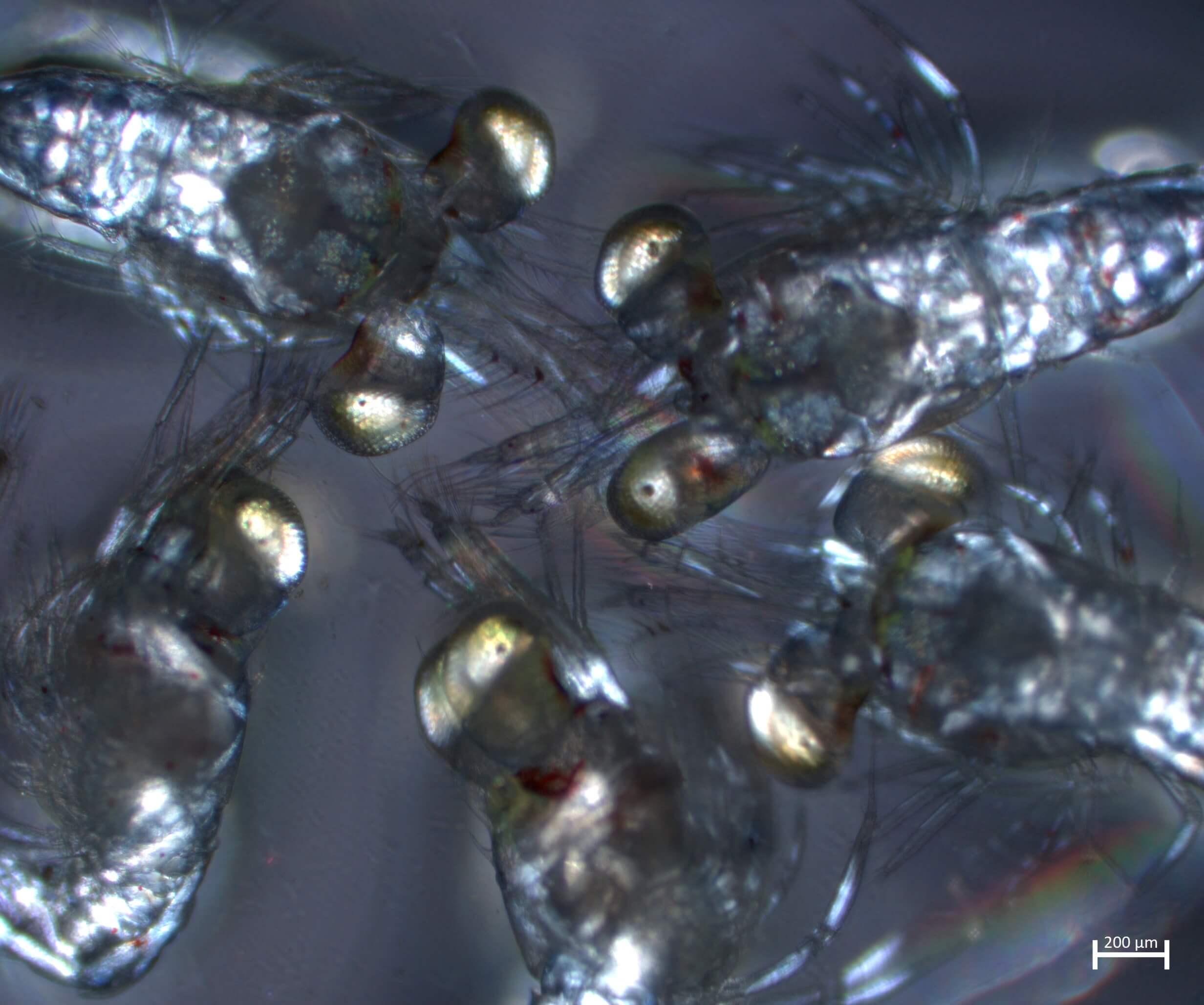An international research group led by scientists from Ben-Gurion University of the Negev discovered among a species of crabs a mechanism that produces a unique eye shine that reflects light in a color adapted to the color of the water in their natural environment and thus enables camouflage in different habitats. The research findings were published in the journal Science

Many marine animals in the ocean appear transparent underwater as part of their camouflage mechanism. However, complete body transparency is not possible for creatures that use the sense of sight, since sight requires the use of opaque pigments. An international research group led by scientists from Ben-Gurion University of the Negev discovered among a species of crabs a mechanism that produces a unique eye shine that reflects light in a color adapted to the color of the water in their natural environment and thus enables camouflage in different habitats. The research findings were published in the prestigious journal Science.
The research was carried out by researcher Keshet Shavit under the direction of Dr. Ben Palmer.
Transparent organisms have developed various strategies to balance the ability to see and not be seen underwater. Among them, young crabs that use a unique structural mechanism that produces a water-colored eye sheen that covers dark pigments. This structure is actually photonic glass (photonic glass) consisting of spheres, a sphere (like the eye of a ball), made of nano crystals. By changing the size and three-dimensional arrangement of these digits, the brightness of the eyes can be modulated - from deep blue to yellow.
In order to understand the structure that creates the shine of the eyes, the researchers used a scanning electron microscope that works at temperatures of -120 and allows to see tissues in their natural form. The findings showed cells, located above the pigment cells, filled with literature consisting of nano-crystals of a substance called isoxanthopterin that have a high refractive index and are the ones that create photonic glass.

Until now, it was not known what the mechanism is that creates the shine in the eyes and how the shine changes its color. "The outstanding feature of the eye shine described here is its adjustability and compactness," he noted Dr. Ben Palmer from Ben-Gurion University in the Negev and the leader of the research. "This is an arrangement that allows manipulation of the eye color of young crabs and hides them from potential predators."
In different species of crabs you can find a different color that suits their natural environment and the depth at which they swim. Also, in one of the crabs in which the research was conducted, a change in the structure of the photonic glass can be seen between light and dark conditions so that it can camouflage itself throughout the day.
The research findings reveal a compact and tunable photonic glass in the eyes of these animals. This solution of nature can serve as inspiration for the design of optical materials and technologies in the future.
The research group included: Dr. Ben Palmer, Keshet Shavit, Avital Wagner, Gan Zehang - from the Department of Chemistry, Alexander Officer - Ilza Katz Institute for Science and Nanometric Technology, Prof. Amir Sagi from the Department of Life Sciences and the National Institute for Biotechnology NIBN, all at Ben University - Gurion in the Negev. Lucas Schertel- University of Cambridge, United Kingdom and University of Friborg, Switzerland, Viviana Prestei- Inter-University Institute of Marine Sciences in Eilat, Daria Akeyink- Inter-University Institute of Marine Sciences in Eilat and University of Haifa, Venkata Jaisoria Yalpargade- Indian Institute of Technology, Johannes Hetj The University of Cambridge, UK.
This research (no. 852948) was supported by the ERC, the European Union's Horizon 2020 research and innovation program (no. 893136), the Swiss National Science Foundation grant (grant number B1-0_198708), Dr. Palmer is the recipient of the Nachum Guzik grant and winner of the Azrieli scholarship for young faculty for 2019. Electron microscope research is supported by the Ilza Katz Institute for Nanoscale Science and Technology at Ben-Gurion University of the Negev.

More of the topic in Hayadan:

One response
It is only interesting that it is appropriate that a scientific list should not have a wrong use of "species",
It says "discovered among a species of crabs",
Breed is the term used in agriculture or domestic animals
instead of subspecies,
In the case of the crabs it is a species (not a "species")
If the error is in the original it is appropriate to enlighten the attention of the writers
And if in editing it is worth correcting,,,